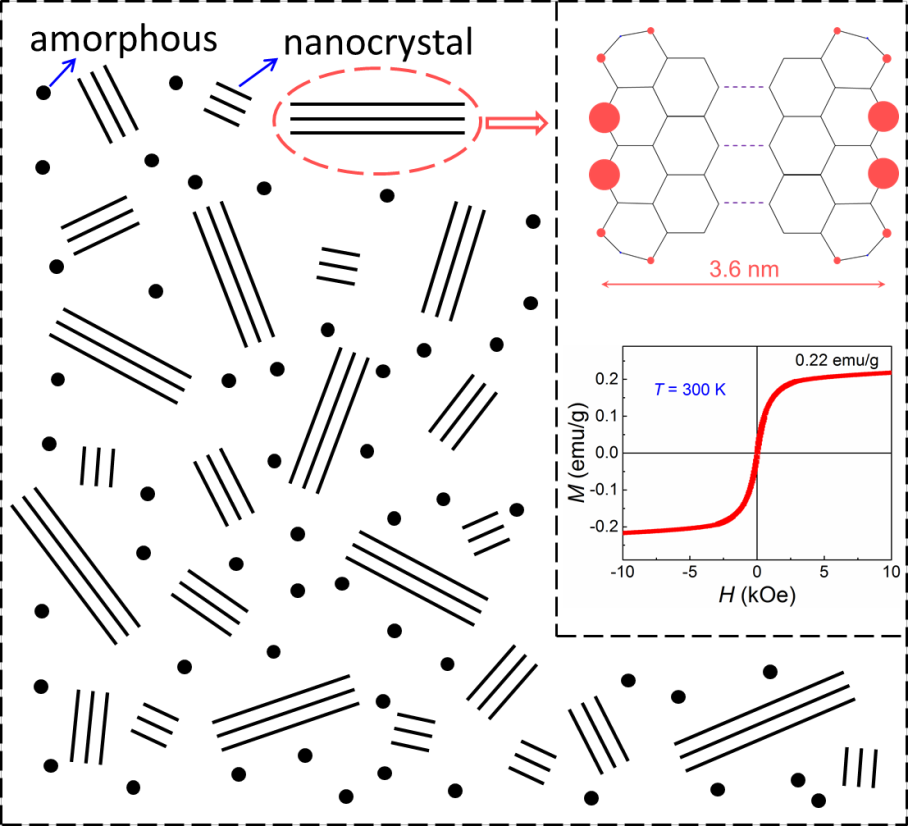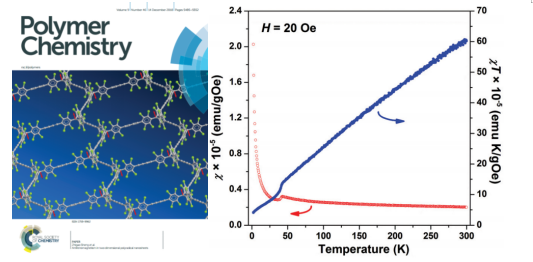Chinese scientists in High Magnetic Field Laboratory, Hefei Institutes of Physical Science reported that they have obtained edge-induced room-temperature ferromagnetism in both carbon nanosheets and 2D organic antiferromagnetic polyradical nanosheets.
Magnetism has broad applications in living organisms as well as in energy harvesting, data storage, and medical diagnosis. Moreover, the ability to knit such magnetic order in atomically thin flatlands would foster vast opportunities for integrated, flexible, and biocompatible devices.
According to recent studies, apart from mechanical exfoliation of bulk van der waals magnetic crystals, two-dimension (2D) magnetism has also been achieved by defect engineering (based on vacancies, adatoms, boundaries, and edges) in non-magnetic 2D materials.
In their first study, the researchers prepared the scalable carbon nanosheets (CNs) without magnetic impurities through a one-stepWurtz reaction and the CNs had amorphous structure with crystallized graphene nanocrystals inside.
The zigzag edges of those nanocrystals in CNs could show ferromagnetic coupling even above room temperature and yielded a saturation magnetization of ~0.22 emu/g which was 2 orders of magnitude larger than reported values in defective graphite.
Moreover, the results from both first-principle calculation and controllable experiments showed that the magnetic properties of CNs were dominated by the distance between zigzag edges.
With decreasing interedge distance from 3.6 to 0.8 nm, the ferromagnetism descended and even disappeared, implying a switch of magnetic coupling between zigzag edges from ferromagnetic to the antiferromagnetic configuration.
In their work, freestanding 2D organic magnetic polyradical (OMP) nanosheets were successfully synthesized using the polymerization of tris (2,3,5,6-tetrachloro-4-ethynylphenyl) methyl radicalsat a liquid/liquid interface.
The OMP obtained had a 2D sheet-like morphology and possessed triarylmethylradicals after polymerization, which could act as spin centers. With the magnetic exchange coupling between radicals, the OMP showed an antiferromagnetic behavior with a Neel temperature of 42.5 K.
The results were published in Journal of Physical Chemistry C and Polymer Chemistry (supplementary journal cover).
The works are supported by the National Key R&D Program of China and the National Natural Science Foundation of China.
Link to the paper: Edge-Induced Room-Temperature Ferromagnetism in Carbon Nanosheets
Antiferromagnetism in two-dimensional polyradical nanosheets

edge-induced room-ferromagnetism in carbon nanosheets. (Image by LIU Caixing)

2D organic magnetic polyradical nanosheets and squid data. (Image by YANG Yang)
Contact:
ZHOU Shu
Hefei Institutes of Physical Science (http://english.hf.cas.cn/)
Email: zhous@hfcas.ac.cn
 Tel: +86-551-65591206
Tel: +86-551-65591206
 Fax: +86-551-65591270
Fax: +86-551-65591270
 Emai: zhous@hfcas.ac.cn
Emai: zhous@hfcas.ac.cn
 350 Shushanhu Road
350 Shushanhu Road